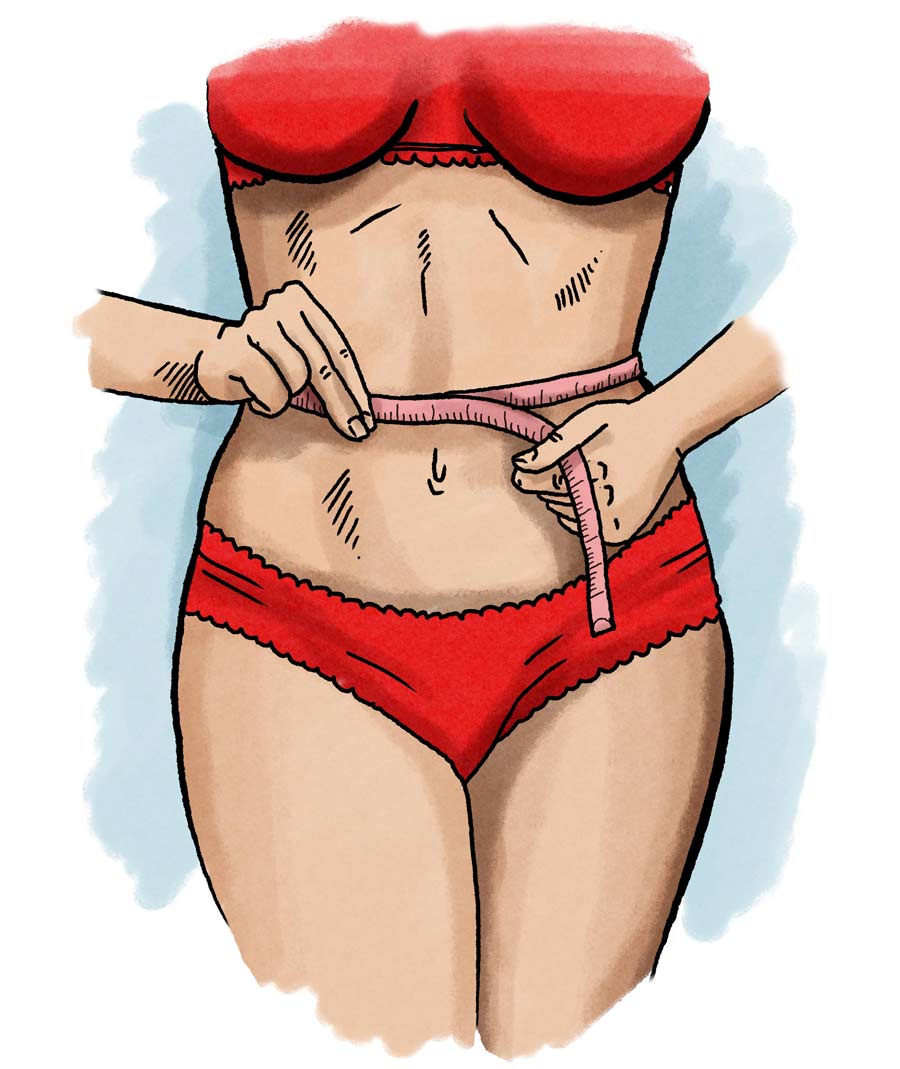How To Measure Your Waist
Whether you're ordering clothes online, monitoring your weight, or designing a bespoke bucket chair for your space-shuttle to the moon (look, the world is on fire; it's OK to have a plan B), you need to be able to measure your body accurately. Here's how to get the digits for your waist.
Waist circumference measurements
Waist measurements are a bit of a life-saver when it comes to shopping for clothes. Dress sizes differ massively between the US, EU and the UK, and vague descriptors on men's clothing aren't much help either (S, M, L...? More like FML). Checking the centimetres or inches is the most reliable thing to do to make sure your clothes fit well. If you find yourself needing to convert between cm and inches, by the way, we've got your back with our cm to inches converter.
In the world of healthcare, an accurate waist measurement can be used as an indicator of visceral fat, a type of body fat that's stored within the abdominal cavity and located around vital organs such as the liver and stomach. Visceral fat has been linked to an increased risk of health complications such as heart disease, cancer and type 2 diabetes. In addition, a waist measurement can also be used as the first step towards working out your WHR (waist-to-hip ratio), another indicator of health risks. You can learn more about WHR here, and we have also included a link to the WHR calculator for you at the bottom of this article.
Before you start measuring
Find yourself a fabric tape measure (not a metal DIY one! :D) or a piece of string which you can use to mark and measure. It's also a good idea to have a piece of paper and pen (or your smartphone) to hand, so that you can jot down the measurement (you don't want to go to all the effort of measuring your waist and then forget the measurement). Once you have those things ready, we can start measuring...
Here's how to measure your waist
- Remove or lift your shirt.
- Find the halfway point between your bottom rib and the top of your hips, just above your belly button. This is where you'll measure your waist.
- Slowly exhale (sucking in your tummy makes the whole exercise pointless).
- Wrap the tape around your waist and make sure it's level on each side, not slipping down or pulled up high and not twisted. It should be parallel to the floor.
- Measure with the tape held snug around your skin: not too loose, but also not cutting into your skin. Take the measurement.
- Repeat the process, just to double-check the accuracy of your original measurement.
- Ta-da! That's your waist measurement.

Measuring waist circumference - video
If you're still unsure whether you're measuring your waist circumference correctly, here's a great video from Dr. Lara.
Waist measurement completed, here's some ideas to consider:
- Pat yourself on the back and buy your new jacket / dress / trousers.
- Measure your hips in order to calculate a Waist-to-Hip measurement.
- Interpret your waist measurement result.
Let's take a look at number 3 together now.
Interpreting your waist measurement results
Ideally, you should look at a range of measurements before making an assessment of your personal health, and you're recommended to consult a qualified health professional before considering radical changes to your lifestyle. With that in mind, several leading health organisations have published the following general information on waist sizes...
The World Cancer Research fund, World Health Organisation and NHS England state that your health may be at risk if your waist is*:
- Women: more than 80cm (31.5 inches)
- Men: more than 94cm (37 inches)
*Excludes those who are pregnant or have a medical condition causing a swollen abdomen. Information may vary for Asian populations. Always talk to a Doctor for medical advice.
In addition, the National Institutes of Health, U.S., states the following when assessing waist size and health risk:
If most of your fat is around your waist rather than at your hips, you're at a higher risk for heart disease and type 2 diabetes. This risk goes up with a waist size that is greater than 35 inches for women or greater than 40 inches for men.
I do hope this article has proved useful to you. Should you wish to calculate your waist-to-hip ratio, check out our WHR calculator. Or, you can calculate your BMI here.
Written by Alastair Hazell
(with assistance from Becky Kleanthous)

